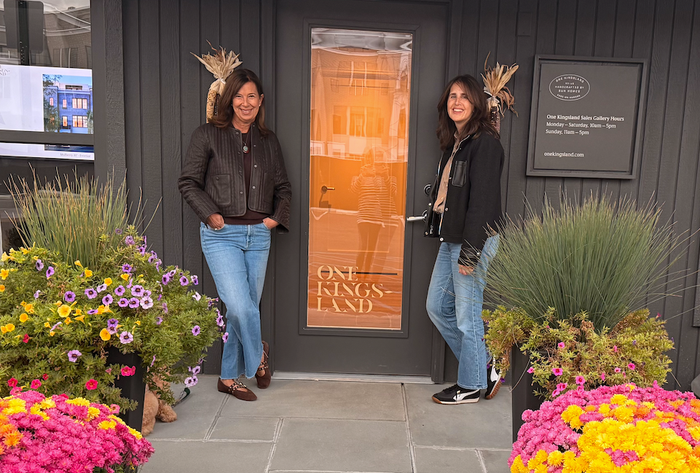Two couples from Westchester County, New York, have embarked on a significant transition as they seek to ‘rightsize’ their living situations. The Falks and the Coopermans, both empty-nesters, are moving into the Edge-on-Hudson development in Sleepy Hollow, a mixed-use community designed for accessibility and social interaction.
The Falks—Stephanie and Andrew—decided to sell their century-old home in Edgemont after their three children left for college. Stephanie, who previously lived in New York City, was eager to return to an urban setting. Andrew, on the other hand, preferred the greenery of their suburban life. Ultimately, they found common ground in their desire for a more active community without completely abandoning the suburban lifestyle.
Around the same time, the Coopermans—Judy and Steven—were also contemplating a move. They aimed to sell their family home and find a lower-maintenance property within a vibrant neighborhood. While discussing their situations during a casual golf outing in early 2024, they learned about the partially constructed Edge-on-Hudson development, which sparked the Falks’ interest.
Shared Goals and Community Spirit
Both couples were drawn to the features of Edge-on-Hudson. The planned four-bedroom townhomes would provide ample space for family visits, while the community’s proximity to the Hudson River and local amenities met their desire for walkability. An elevator in their homes would also accommodate aging family members.
“I just believe fully in community,” Stephanie remarked. “Being stimulated and being around other like-minded people can be really beneficial as you grow older.” The shared amenities, including a park and a pool, are expected to encourage social interactions among neighbors.
Both couples, in their mid-to-late 50s, are not ready to retire. Stephanie runs a mindfulness and meditation company called Pause to be Present, while Judy works remotely in administrative management for a law firm. Their husbands are professionals in real estate and law in New York City.
Despite the expensive real estate market, both couples successfully sold their prior homes for slightly more than they paid for their new townhomes, which start at $1.6 million. The new residences are designed to be accessible, making them a better fit for the couples’ long-term needs.
Building New Connections
The Edge-on-Hudson development, which is still under construction, will eventually feature nearly 1,200 townhomes, condos, and apartments on a 70-acre site that previously housed a General Motors assembly plant. Along with residential units, the development will include a park, a grocery store, and a hotel.
In late July, both couples moved into rental apartments within Edge-on-Hudson, where they will reside until their townhomes are completed. Notably, they are not alone in their transition; several other couples from their social circle are also considering purchasing homes in the same community.
For Judy and Stephanie, the changes have invigorated their social lives. “It’s very easy to just say, ‘Hey, you want to go out for a walk?’” Judy noted, reflecting on how their interactions have become more casual and frequent. They are already establishing friendships with new neighbors, noting the community’s welcoming atmosphere.
“People are friendly. People are out a lot,” Judy observed. “It’s kind of like going to college when you’re a freshman; everyone wants to meet people.”
As the Falks and the Coopermans adapt to their new living arrangements, they exemplify a growing trend among Gen Xers and baby boomers who are looking for vibrant, community-oriented lifestyles without fully committing to retirement living. Their journey underscores the importance of finding a balance between personal space and community engagement, all while embracing the next chapter of their lives.







